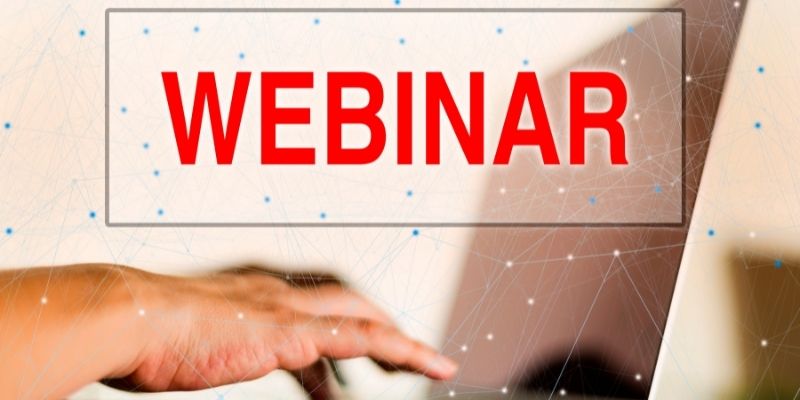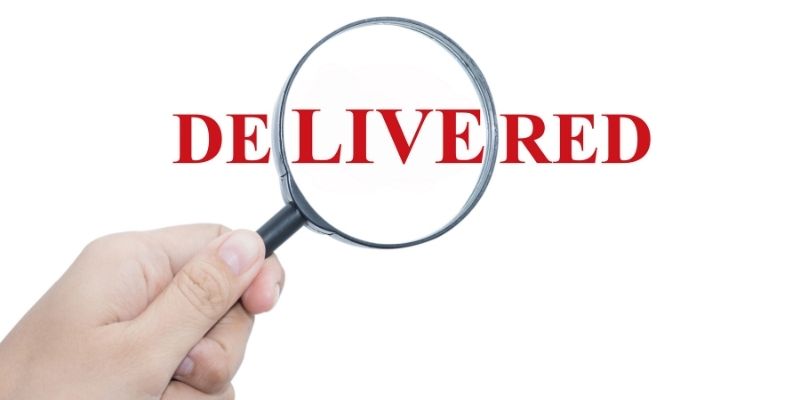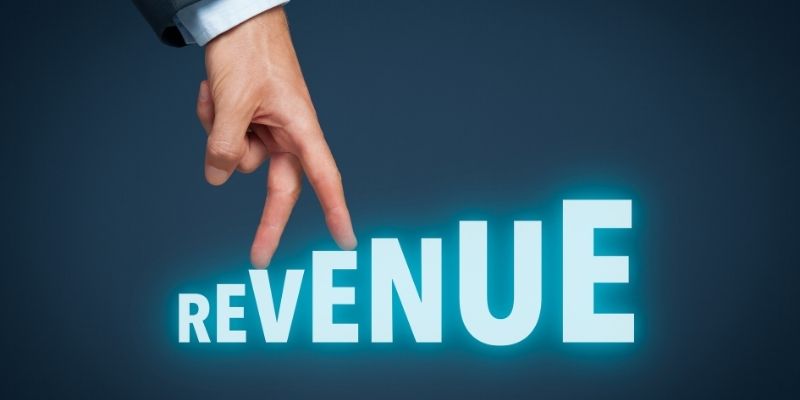Recent Posts
-
deepest desires
Oct 08 2024 -
Black Friday email campaign
Nov 12 2022 -
Re-engage old list
Oct 27 2022
How to Earn With Developing and Selling Digital Products, Step by Step

This is loosely based on Neil Patel’s million-dollar formula as shared online. In his formula, he outlines the bare basics of what you would need to do to earn millions of dollars, just as he has with developing and selling digital products.
I’m going to fill in the gaps as I go, staying true to his formula but taking most of the guesswork out of the process for you.
Keep in mind, this is nearly the same formula many marketers have used, both before and after Neil, to create similar successes. So I’m not giving away any secrets here when I share how some of the top online marketers do this every day online.
But I will make it as simple as possible – just follow the steps, put in the work, and in a few weeks or months, you can start to see massive success.
A little background: Neil used to sell digital products, and in fact, that’s mostly what he did for several years until he started his software business.
During his best year, he earned $371,882 on an average month, with some months as high as $600,000 and others where he did $200,000.
You might wonder why he stopped doing this since he was making such good money. The answer is, he wanted to build an even bigger business. He realized that to continue growing, he had to create more and more digital products and treat them like a real business instead of a lifestyle business.
Then again, if you hired people to do much of the work for you, you could indeed earn millions of dollars while running it as a lifestyle business. But, of course, in the beginning, you want to do much of the work yourself, see how it’s done, what works, what doesn’t work, and find the best way to scale it up massively using others to help you.
This does take time and effort. It’s work. But it’s also one of the best ways to make serious money online.
How much you earn is totally up to you. Suppose you’re content using this method to earn an extra few thousand per month. However, if you want to put in the work and scale it up, that’s great too.
Or maybe you want to follow in Neil’s footsteps, using this as a stepping stone until you get your million-dollar software businesses up and running.
Let’s get started:
Step #1: Find out what your audience wants.

If you don’t already have a niche in mind, then choose one. You want a niche where people are readily spending money, especially on digital products.
Once you have your niche, it’s time to find out what your audience is willing to pay for.
Yes, you could take a guess, and you might be right. Or you could be wrong, in which case you just wasted time and money creating digital products people don’t want to buy.
Finding out what people want can sometimes be as easy as running a survey. Use a service such as Survey Monkey to discover what problems your audience has, what issues they want to solve, what they want to accomplish, and what is causing them to lose sleep at night.
Maybe you don’t have an audience to send to your survey. You could use social media to contact your audience and invite them to take your survey. Facebook Groups can work well for this.
Or might even contact people via email, text, phone, and in person. Have honest conversations in which you discover what issues they have.
Look at best-selling digital products in your niche. First, read the sales letters carefully, paying attention to the central theme of the letter and the pain points addressed. Next, read the testimonials to find out how people are using the info product.
Look at courses in your niche, as well as books. Then, see what users and customers are saying about the digital products.
Make lists of what you discover. First, get a good idea of what you want to create, and then survey people to help you refine the idea of the digital products into something people are passionate about and are eager or even desperate to buy.
Ideally, you want to create digital products that solves a problem that many people in your niche’s problem.
For example, if you’re in the internet marketing niche, getting qualified traffic to their website is an all too common problem. If you can offer a solution to this problem that works, especially if it’s a solution people don’t generally know about, you’ll have a winner. This is the topic Neil chose.
Better still, you can offer an upgrade for people who don’t want to go to the trouble of implementing your solution. Essentially, you will do the work for them, or you offer them software that does the work for them as Neil did. Either way, you’ll get many people who upgrade because they would rather have a fast, easy solution. That’s why the ideal product not only solves a problem but also allows you to offer an upgrade that many people will want.
Let’s do a couple of more examples of what we might be looking for…
If you’re a landscaper, you could offer a class on designing a front and back yard. Some people who take your class will realize they’re out of their depth and prefer you do it for them. You and your team can provide this service virtually with no need ever to visit their home. The homeowner can then take your diagrams and list of plants to a local landscaper who can make it a reality.
Or let’s look at something basic, such as website building. You can offer a course to chiropractors or authors, or yoga instructors on how to build the ideal website that converts visitors, and then you can also offer to upgrade them by doing the work for them.
The product you create doesn’t necessarily need its upgrade. But if you’re trying to decide between two different product possibilities, I would recommend choosing the one that does allow for an expensive upgrade you can fulfill for even more income.
Step #2: Create a Webinar to Sell Digital Products

“Oh no, you mean I have to do webinars??!”
I realize that doing a webinar can sound like a super scary thing for some people. But I can also tell you that once you’ve done your first couple of webinars, you’ll wonder why you were ever so nervous in the first place. It is much easier than most people think.
And the fact is if you want to earn big money in a relatively short amount of time, then yes, you need to do webinars. But, short of getting someone like Oprah to tell people to buy your product, there probably is no faster method for converting into customers who will pay hundreds or even thousands of dollars for your product.
In my opinion, webinars are the easiest and fastest way to sell high ticket information digital products.
Here is a step by step guide on how to create the webinar
To bring people to a webinar, you need a powerful hook – something that makes your target audience sit up and say, “I want to know that!”
In Neil’s case, he offered to show people how to drive 100,000 visitors to their website. Notice there’s nothing fancy in that promise, but it worked because it’s exactly what his target audience wanted to know.
The promise drives people to attend the webinar. Your promise needs to target your ideal customer for your digital products exactly. It won’t do any good to drive many people to your webinar if those people aren’t a good fit for your product. For example, if your product teaches social marketing skills for small businesses, you don’t want to target corporate executives from Fortune 500 companies. If your product teaches dentists how to build their practices, then you don’t want a webinar promise that brings in all sorts of doctors and not just dentists. Your promise must target your exact information product buying audience.
Next, you want to offer a bribe to keep your listeners on the webinar for the entire duration of the presentation. This bribe might be something as simple as a cheat sheet that shows them all the steps necessary to implement what you’re teaching.
Mind you, and if a cheat sheet is your bribe, then you’re going to make it simple and without detail. Here, the idea is to teach what to do on your webinar but not teach HOW to do it. For that, they need your information product, or they need to hire you to do it for them.
This is a critical point that often gets lost. You’re giving enough information to make the webinar truly informative in its own right, even if they don’t purchase. But you’re not giving away the bits that will enable listeners to make things happen quickly. It’s a fine line that you’re walking, and it might take a little practice to learn exactly how much to share and how much to hold back.
I’ve been on webinars that offered actual bribes, like drawings for free stuff at the end. “Stick around, and you could be our lucky iPhone winner” and that sort of thing. I would be careful with an offer like this. Ideally, you want your listeners there primarily because they are interested in the promise you made, not because they want to win an iPhone.
If you’re wondering why you want listeners to stick around until the end of the webinar, the answer is simple: You can’t sell them your digital product at the end of the webinar if they’re not there to hear your offer.
That’s why it’s essential to fill your webinar with excellent information that reveals things your audience doesn’t know but wants to learn. If you can reveal secrets that blow their minds, all the better.
Ideally, you want them to stay riveted to your presentation. So cut out the small talk and anything that might create boredom or allow your audience to get distracted. Instead, keep a good pace without rushing, make it interesting and exciting, teach them what they would love to know, and hold back enough to make them desperately want your product.
I know that sounds like a tall order, but I have no doubt you can do it with some experimenting.
During the webinar, you give them the step-by-step strategies to get the result you promised. You’ll be candid that you cannot reveal all the details in the time allowed because that would take much more time than you have. But if they’re interested, you’ll make the entire system available to them at the end of the call.
Or if you’re selling software rather than an info product, then you can promise that if they don’t want to do all the work you’re outlining for them to get the solution they seek, then you have a massive shortcut that’s created fast success for people just like them.
“Would you like a way to do this quicker and more automated? Here’s what we can do for you…” and then you outline what your product or service does.
You give them a call to action to get your solution, and people can click the button and buy it on the spot. Before you close the webinar, offer an incentive to make the purchase right away, such as a discount or a fantastic bonus. Keep in mind that if people don’t buy right then and there, the odds of them ever buying go down drastically.
You can potentially make a few more sales after the webinar by doing a follow-up series via email and SMS. In your emails, remind them of something important revealed in the webinar to remind them why they want your system.
Or give them brand new info you didn’t cover in the webinar. Never talk about “changing their mind,” but instead talk about how you know they were still making up their mind, and here’s more info to help them because you know they want that benefit or result, and this is the only way they are going to achieve that.
You get the idea.
Webinars are by far the easiest way to sell because people who have stuck around for the entire webinar do want a way to get the result they seek in a quicker, faster, easier or more automated fashion than trying to figure it out themselves (info product) or doing it themselves (done for you service or software).
People want the solution to their problem to come to them faster and easier and with less work, and when you can offer them this benefit of getting what they want in a more accessible, faster solution, they will buy it.
Step #3: Take all of the risks away from your prospects when selling digital products

You not only want to have a money-back guarantee…
…you not only want to TELL them about the money-back guarantee…
…you wish to present your guarantee in such a way that it becomes a total no-brainer to try your product because they have nothing – NOTHING – to lose and everything to gain.
“Our product does this, this, and this for you. So in just days, you can be receiving this benefit and this benefit, without the hassle of this obstacle and that obstacle. Plus, you’ll no longer have this problem because now you’ll have this solution and this benefit and this benefit.”
“And to top it all off, to prove to you that this works, to take away any anxiety you might have and take all of the risks out of this, you have a full X number of days or weeks in which you can say, “Hey, this isn’t for me” and we will refund you in full. It’s that simple. The only way you can lose is NOT to grab this offer and be one of the people who say, “If only I’d done that when I had the chance.”
You get the idea.
Now here’s how Neil kicked this up a notch higher. This method will melt away resistance and significantly increase the number of people who try your product as well as increase the number of actual sales, and it’s simply to do this:
Give them a trial offer. It might be a free trial offer, a $1 trial offer, or even a $10 trial offer… whatever you decide. The point is to make it almost free to get started. You still collect their credit card info, and they have X number of days to decide if it’s for them.
Neil did this, and his sales went through the roof.
You might test this both ways, with a trial offer and without. Here’s what typically happens with most offers:
Without a trial offer, for example, let’s say you make 50 sales.
With the same number of people on the webinar, you double the conversion rate to 100 sales with a trial offer.
But of course, those people are just paying the trial price, most likely a dollar.
Between the time they first sign up, and the time you charge full admission or the first payment, you will have some people cancel. That’s fine. Because from what I’ve seen, maybe half of those extra sales will cancel, and thus you will end up with 75 actual product sales, which is still 25 more than if you didn’t make the trial offer.
Your numbers will vary, of course, depending on your audience, your product, and a host of other factors.
Another benefit to offering a $1 trial offer is this: If you’re new to selling on webinars, you will likely be much, MUCH more comfortable asking people to pay $1 than you will ask them to pay several hundred dollars upfront.
And you must be comfortable enough to sound utterly confident in your product and your offer because that confidence will resonate with your audience and increase your sales.
Step #4: Keep Delivering

If you think it’s enough to create your digital products and deliver that digital products. These days people expect more, and it’s up to you to deliver it.
Offer ongoing training updates and group coaching calls. The idea is to help your customers implement and use what they’re learning or make the most of your software. You don’t want them to feel like you’ve abandoned them after the sale.
This will increase customer satisfaction and reduce refund requests.
And by continuing to offer them updates, group coaching, and so forth, you have the perfect excuse to stay in constant contact with them and offer them a host of other digital products as well.
You might want to read that last paragraph again because those 34 words create fortunes.
Rather than contacting them to sell them stuff, you contact them to make sure they are getting the most out of the product they purchased. You care. You give a darn about their success. And they will take notice of this.
This is why, when you suggest that a new product is a perfect complement to the original, or the new service is an even better way to achieve their goal, they’re going to listen, and in many cases, they will buy.
Step #5: Create a robust community

People love to do courses with other people, or learn skills with other people, or even build their businesses with other like-minded people.
No one wants to go on this journey alone. They want help when needed, they want to have their questions answered, they want to feel good by helping others, and they want to make new connections and friends, too.
Working together, people can get more ideas, help each other solve problems, collaborate, and feel they are a part of something bigger themselves.
People are hard-wired to belong to tribes, and if you can create a tribe that people want to be a part of, they will never leave, even if you continue to charge a monthly fee for it forever.
And again, creating a tribe of people in the form of a robust community will make it super easy for you to sell additional digital products and services.
Step #6: Scale Up Your Revenue with More Webinar Attendees

If you already have an audience, those are the first people you want to get on your webinar.
Next, if you have relationships with other movers and shakers in your niche, strike deals with them to get their audiences on your webinars.
Finally, use paid ads for a continuous stream of new webinar attendees.
Hopefully, you’ll use the first two methods – targeting your audience and the audiences of others – to start making plenty of sales. Then you can use that profit to begin advertising with paid ads on Facebook and YouTube.
Hook them with your free webinar, teach great stuff and make lots of sales. Neil used to spend over $100,000 a month on paid ads because it was so incredibly effective. He found it worked even better than running SEO traffic to his webinars.
Step #7: Be Patient and Test

You might get lucky and hit it out of the ballpark right away. Or you might not. In most cases, you’ll need to refine what you say to get people on the webinar, refine how you do the webinar, and especially work on presenting your offer at the end of the webinar.
If you’ve never sold via webinar before, then you know you are learning new skills, and you’re not going to master them overnight. That’s okay.
I’ve seen new marketers who got just a very few sales, or even just one sale, and even NO sales on their first webinar and every one of them who persevered went on to earn a minimum of six figures with their webinars. The ones who quit? Well, you can guess what they earned.
It’s okay to muff your first couple of attempts. Please do everything you can to get it right, but don’t become paralyzed by trying to perfect any of it.
Have an outline to follow for your webinar and then practice it a few times. For example, if you’re nervous talking to a couple of hundred people at once, pretend you’re just talking to one friend.
Or get someone to join you on the webinar and ask you questions, sort of like an interview. Sometimes all it takes is hearing a friendly voice to allow you to relax and enjoy the process.
Neil recommends using Google Analytics to create a funnel to see where people are dropping off. Maybe they’re dropping off of your webinar, or your checkout page, or they’re asking for a refund within the trial period.
Monitor what’s happening and when it’s happening to make corrections.
Do they sign up but then miss the webinar? Do a better job of building the perceived value of the webinar and reminding them of when it’s taking place. If possible, use SMS texting to remind people the webinar is starting soon.
Do they leave the webinar early? Provide more value on the webinar and try offering a different incentive for staying online for the duration.
Do they stay for the entire webinar but don’t buy? Find out why by asking them.
Realize this isn’t likely to make you a ton of money in a few days, but if you invest three months or more to testing and tweaking, you can begin to see excellent results.
I want to leave you with this mind-blowing thought

What if today you start researching what you want to create as your next product. Let’s say it’s a course. You spend a week researching what people are dying to know, and then you spend another week recording a series of 10 or 20 lessons that teach people to get a result they truly want to have.
Next, you work on creating your funnel, including your webinar. And maybe 4 to 6 weeks from right now, you have your first webinar. That first week you do three webinars, and you make some sales.
You also find out what needs fixing, and you fix it, and you do more webinars.
And in 2 to 3 months from now, you’re making some decent money. Nothing spectacular, but enough to know this is working.
And you perfect your webinar and your funnel, and in six months, you know that if 1000 people sign up for your webinar, 300 of them will show up, and 250 of them will stay for the entire webinar.
And of the 250, looking at your numbers, you know that 30 of them will purchase your course.
And your course costs $500.
This means one webinar with 1000 sign-ups equates to $15,000.
And maybe you spent 10%, 20% or even 30% of that on advertising.
And you can get enough interest through advertising to do two webinars a week.
Are you getting the picture?
Or maybe this scenario is too rosy, and you only do half as good in six months. Would you be terribly disappointed to be earning just a few thousand dollars a week by holding two one-hour webinars?
One Last Note About Digital Products

We only talked here about promoting your own product via webinar, but there’s no reason why you couldn’t team up with a product owner and split the profits. The two of you can conduct the webinar together, or you can do it alone. Decide in advance what an equitable split of profits will look like.
Or you can cheat: Yes, this is perhaps a bit sneaky, but it works. You will become an ‘overnight’ expert (in reality, it takes a month or more) by purchasing the top 5 or 10 digital products on a specific topic. Devour them. Make the information yours. Use it yourself. Take notes on what you do and how it works. And then create your own digital products in your own words using what you’ve learned.
If you’re thinking this, all sounds great, but you could never do it. I would urge you to reconsider. This is literally a formula to earn six or seven figures online in one of the most hassle-free, simplest methods I know of.
And yes, you can do it.
